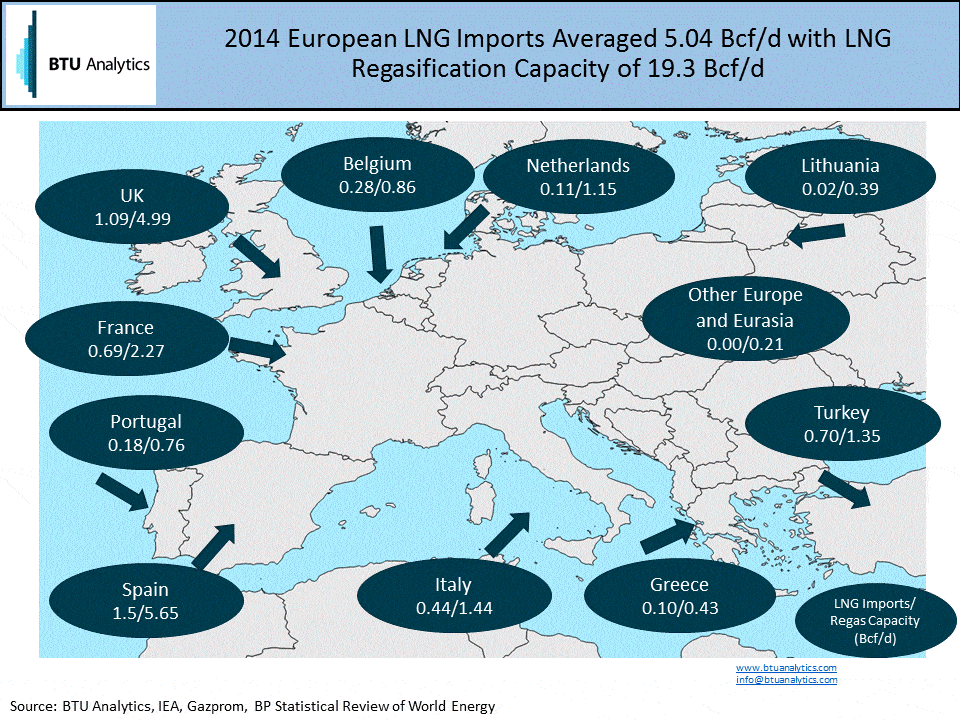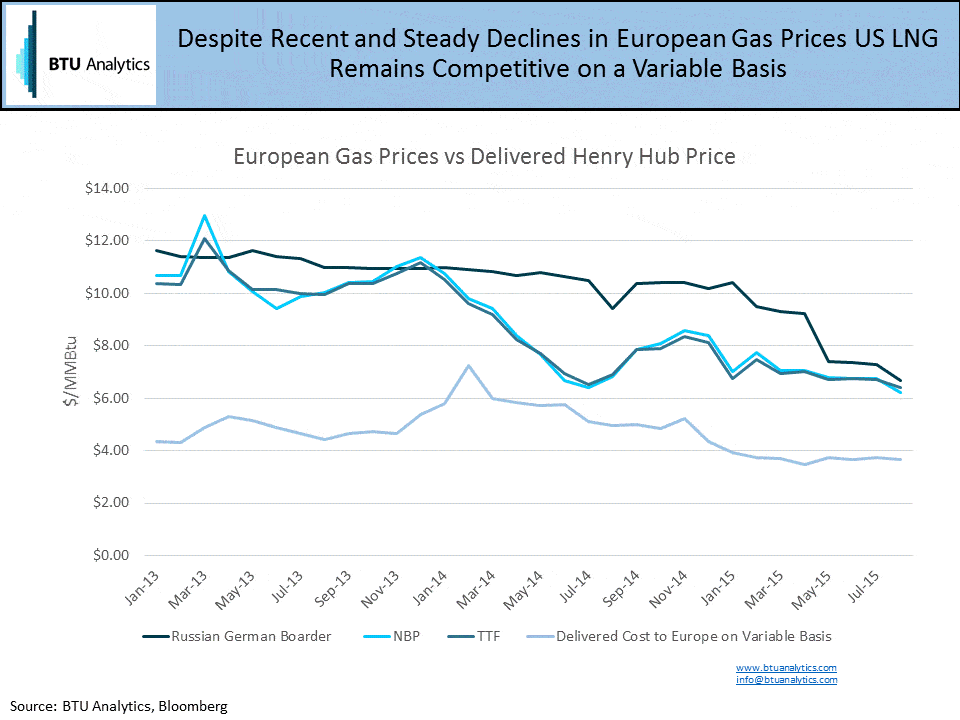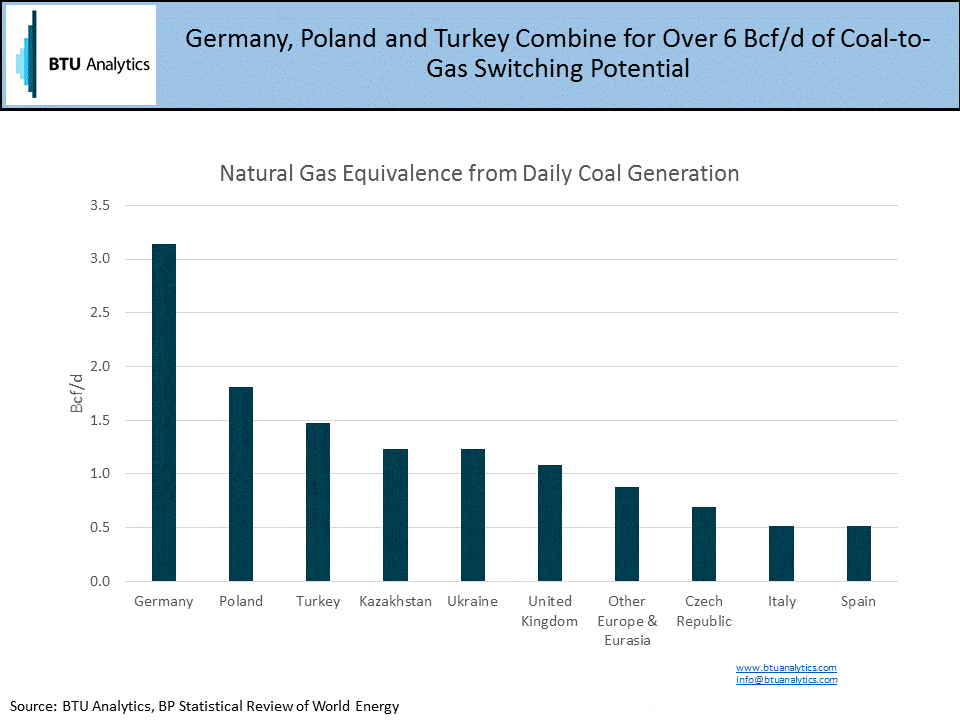With Cheniere Energy’s Sabine Pass LNG Terminal expected to export its first cargo in December and the slowdown in Asian economies, the market has started to look towards Europe to help absorb excess US natural gas. With limited demand growth expected in the short term, one of two things, or a little bit of both, would need to occur for significant US gas to make it across the pond: less coal consumption or less natural gas imports from Russia.
In 2014, a little over 5 Bcf/d on LNG imports came into European and Eurasian countries. Spain and the UK accounted for the largest share, importing a combined 2.59 Bcf/d of LNG. Regasification capacity throughout the region sits at a much higher 19.3 Bcf/d, meaning that Europe only utilized 26% of its re-gas abilities. Additionally, Gazprom reports that Russia supplied the European gas market with 14.09 Bcf/d of natural gas in 2014. Total demand in Europe and Eurasia (excluding Russia and Turkmenistan) sat around the 55 Bcf/d mark, meaning that between Russia and LNG, 34% of natural gas needs were met.

If we look at various natural gas prices, we get a picture of the competitive nature of US LNG. The chart below shows Russian gas prices at the German border, the National Balancing Point price in the UK and at the Dutch TFF point. Also shown is Henry Hub with additional variable costs to get to the European gas market, assuming $0.50 for transportation and re-gas fees. From a purely financial perspective, US LNG could easily push back on Russian flows.

The other fundamental that would allow additional LNG to flow into Europe is more natural gas fired generation. Most sources state that coal-to-gas switching in European gas market occurs in the $6-$7/MMBtu range, which domestic prices have hit. But, based on the pricing charts above, US LNG could be much more competitive with coal, opening up a door for increased consumption in a time of stagnating demand. In 2014, coal produced around 11 million megawatt hours of power a day which equates to 15 Bcf/d of gas burn equivalence assuming a 7.5 heat rate, so the capacity to switch is certainly there.

All of the above highlights that there is flexibility in European gas fundamentals. Add in some instability in the Middle East and North Africa, and the US is set up well to penetrate the market and serve as an alternative destination for gas that was contracted with Asian buyers. But excess US gas is contingent on continued robust growth in the Northeast and, in this commodity environment, some are starting to wonder when producers will hit a wall. For more information on BTU Analytics’ production analysis and the Northeast’s ability to continue to fuel production growth, check out our Upstream Outlook and Northeast Gas Quarterly Products.









